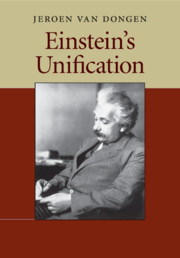Book contents
- Frontmatter
- Contents
- Acknowledgments
- Introduction
- 1 Formulating the gravitational field equations
- 2 On the method of theoretical physics
- 3 Unification and field theory
- 4 Experiment and experience
- 5 The method as directive: semivectors
- 6 Unification in five dimensions
- 7 The method and the quantum
- Conclusion
- References
- Index
6 - Unification in five dimensions
Published online by Cambridge University Press: 05 May 2013
- Frontmatter
- Contents
- Acknowledgments
- Introduction
- 1 Formulating the gravitational field equations
- 2 On the method of theoretical physics
- 3 Unification and field theory
- 4 Experiment and experience
- 5 The method as directive: semivectors
- 6 Unification in five dimensions
- 7 The method and the quantum
- Conclusion
- References
- Index
Summary
We turn our attention again to Einstein's attempts to unify gravity and electromagnetism; in particular, we intend to address various aspects of his study of the Kaluza–Klein theory. Einstein studied this theory extensively on a number of occasions. His deepest involvement was in the late 1930s and early 1940s, producing two substantial papers. By this time Einstein had become firmly settled at the Institute for Advanced Study, where his Kaluza–Klein collaborators, Peter Bergmann and Valentin Bargmann, were employed as his assistants – again a short introduction to both of them is contained in the boxed texts of this chapter.
Particle solutions in field theory
Einstein was quite productive in the years between the semivector and these later Kaluza–Klein publications. In 1935, the “Einstein–Podolsky–Rosen” paper on the completeness of quantum mechanics appeared, and in 1938 he co-authored another important article on “the problem of motion” – the relation between the geodesic equation for test particles and general relativity's field equations; he collaborated with Leopold Infeld and Banesh Hoffmann on this subject. Einstein published a study on gravitational lensing in 1936 and the same year he and Nathan Rosen submitted an article to the Physical Review that called into question the existence of gravitational waves.
- Type
- Chapter
- Information
- Einstein's Unification , pp. 130 - 156Publisher: Cambridge University PressPrint publication year: 2010



